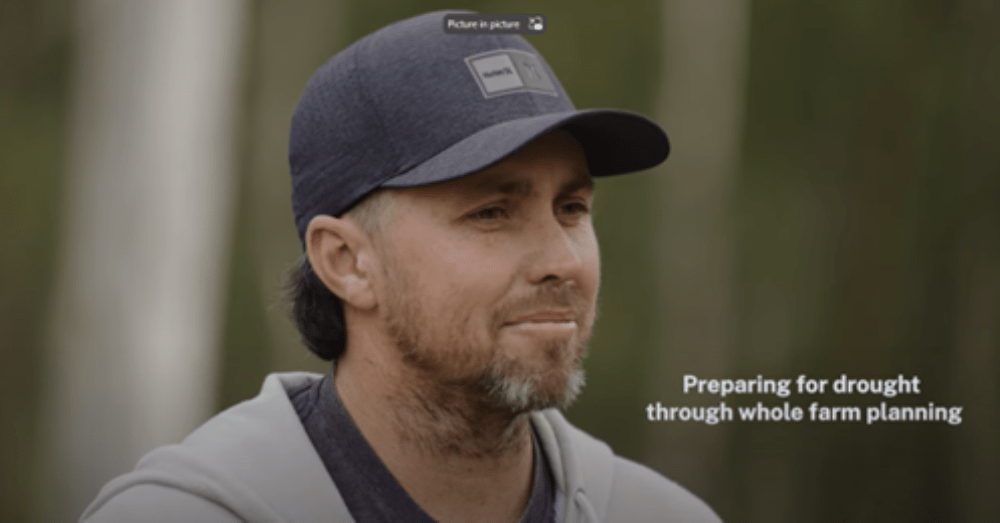
Jono’s farm makeover protects natural assets
Jono and Kristy Fitzgerald are the custodians of an Endangered Ecological Community on their Luskintyre property in the Lower Hunter.
With the help of the Future Drought Fund’s Natural Resource Management Drought Resilience Program and Hunter Local Land Services they’re giving their farm a ‘makeover’.
Their goal is to protect their natural assets and improve their grazing management.
“We were interested [in the program] because we went through the drought and we wanted to prepare for the next one. We were nearly down to nothing,” Jono said.
“Basically, one dam was completely dry, the other one didn’t have a great deal left and the third one only had enough to survive.”
The Fitzgeralds hadn’t heard about the benefits of dam fencing before joining the program.
“We fenced off the dams to try to stop some of the erosion and things like that from happening.
“We’ve just started to split the paddocks up and rotate them through and part of the plan is to have water from the river so we can split it up even further.”
Part of the reason the Fitzgeralds bought the property was for its remnant woodland.
“We’re trying to preserve it as much as we can by only putting the stock through as little as possible.
“With the farm planning course we did, we have seen the benefits of rotating your cattle through on smaller paddocks to raise a whole area rather than set stocking.”
The Fitzgeralds now have 12 paddocks they rotate their cattle through. By the end of the project they hope to have 20 paddocks.
“Our plan is to stop the cattle from grazing in around the dams where we’ve fenced off, limit the amount of manure, and try and stop a bit of the erosion around the dams.
“I’ve got a plan to put troughs around, so they don’t have to go in there at all. Hopefully, when it comes dry times that should help out a lot.”
See how Jono prepared for drought through whole farm planning
Video duration 2 mins 44 secs
Introduction
This is the transcript of a video case study produced by Hunter Local Land Services for a project funded by the Future Drought Fund.
Learn more about the Future Drought Fund’s Natural Resource Management Drought Resilience Program.
Transcript
[Recording begins]
Jono Fitzgerald [0:15]:
We’ve got 40, 42 hectares and currently we’ve got 28 cows and they’re all just starting to calve at the moment.
We first heard about the farm makeover program with Local Land Services from Col Freeman.
We were interested because we went through the drought and we wanted to prepare for the next one. We were nearly down to nothing. Basically one dam was completely dry, the other one didn’t have a great deal left and the third one, only had enough to survive, basically.
We hadn’t heard about fencing the dam off. That wasn’t something we’d ever plan to do or knew that the benefits of fencing the dam off part of that project, yeah, to improve the water quality and hopefully preserve it.
Part of one of the projects through LLS, we did a farm planning course. We’ve just started to split the paddocks up and rotate them through and part of the plan is to have water from the river so we can split it up over further. We fenced off the dams, try to stop some of the erosion and things like that from happening.
We’ve got this remnant woodland vegetation here which was part of the reason why we bought the property. So we’re trying to preserve it as much as we can by only putting the stock through here as little as possible, basically.
There’s a lot of birdlife in here at the moment and that’s part of the part of the reason we do some other tree planning to try and link it up and plant some different species to hopefully attract some other birds and insects and things like that.
With the farm planting course we did, we seen the benefits of rotating your cattle through on smaller paddocks to raise a whole area rather than set stocking. Currently we’ve got the 12 paddocks that we rotate through. We hope to get to about 20 paddocks by the end of the project once we get the water a bit more easily sourced.
So, our plan is to stop the cattle from grazing in around the dams where we’ve fenced off, limit the amount of manure and try and stop a bit of the erosion around the dams.
I’ve got a plan to put troughs around so they don’t have to go in there at all and that should hopefully when it comes dry, times help out a lot.
[Recording ends]


